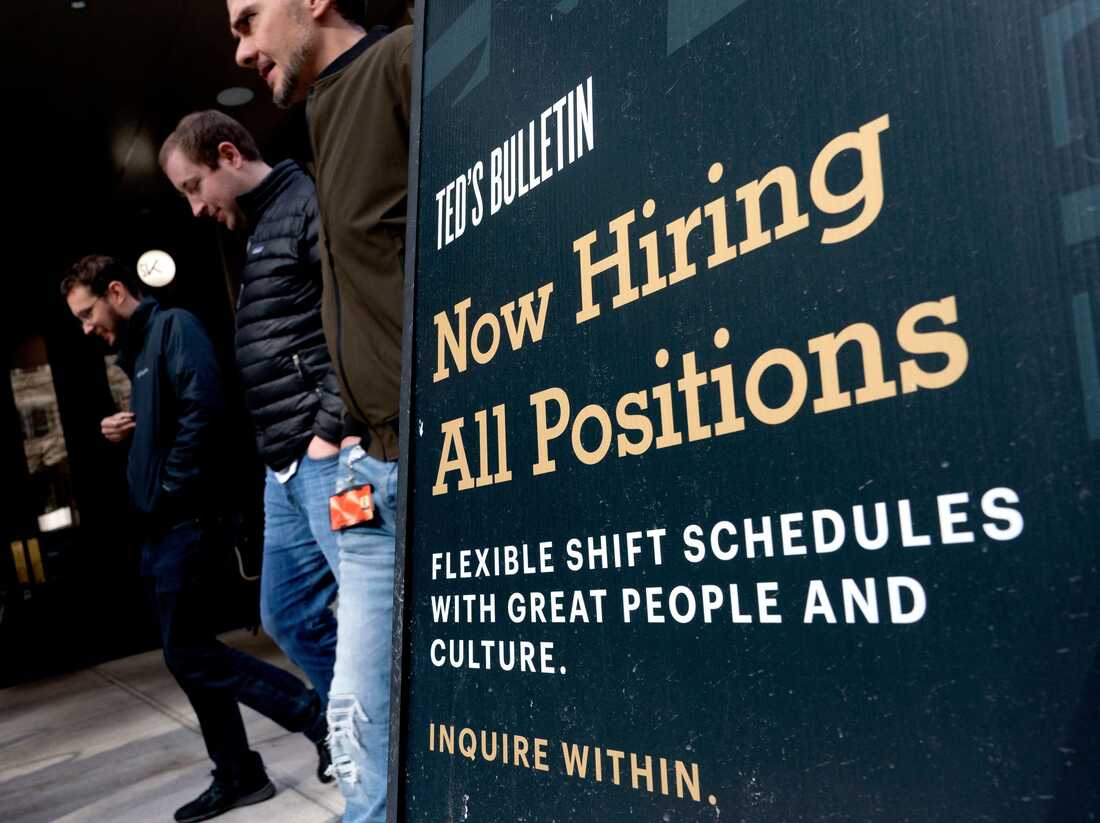In November, the United States economy saw an increase of 199,000 jobs

The US economy experienced another robust month of job growth, receiving a boost from returning actors and autoworkers who had been on strike. In November, employers added 199,000 jobs, leading to a decrease in the unemployment rate from 3.9% to 3.7%, according to data released by the Bureau of Labor Statistics on Friday.
Despite recent pessimism, the economy is still performing well. Jane Oates, CEO of the employment education nonprofit WorkingNation and a former Department of Labor official, stated, “The economy’s still humming along.” This positive outcome contradicted predictions of a more challenging day.
Economists had anticipated a net gain of 180,000 jobs for the month, with an unchanged unemployment rate, according to Refinitiv. The labor force participation rate increased by 0.1 percentage points to 62.8%, reaching its highest level since the beginning of the pandemic. Daniel Zhao, Glassdoor’s lead economist, highlighted the participation rate increase as a “positive underlying context to the unemployment rate decline” in commentary issued on Friday.
The largest employment gains last month came in health care and government, which added an estimated 93,200 and 49,000 jobs, respectively. Manufacturing saw a boost, too, largely because of the return of striking autoworkers, which lifted motor vehicles and parts employment by 30,000 jobs.
Additionally, the resolution of the Screen Actors Guild strike against Hollywood studios resulted in 17,200 jobs added in the motion picture and sound recording industries.
In total, the BLS was anticipating a net gain of 35,000 workers returning after strikes: The agency estimated that 61,000 workers were absent from the labor market due to labor disputes, versus 96,000 the month before.
Taking into account those one-time gains, the underlying rate of job growth is likely around 160,000 jobs per month, which aligns with the 2019 average, wrote Julia Pollak, senior economist with ZipRecruiter.
November’s jobs number is in line with the strong monthly gains hit in the decade before the pandemic, when 183,000 jobs per month were added. The current rate of job growth also is well above the “neutral rate,” or what’s needed to keep up with population growth.
“It is critical to put this data in the proper context,” Joseph Brusuelas, principal and chief economist of RSM US, wrote in a note on Friday. “Given long-term demographic changes and structural transformation of the US economy to keep employment stable, only 75,000 jobs per month need to be created, in contrast with the roughly 200,000 that was the case just over a decade ago.”
The biggest declines occurred in the retail trade and temporary help services sectors, which lost 38,400 jobs and 13,600 jobs, respectively.
“The [reason for the] reduction of jobs in retail is very similar to the reduction of jobs in other places, except retail hasn’t been able to absorb — and that’s technology,” Oates said.
As e-commerce and in-store pick-ups become more engrained in how people shop, that leads to fewer people needed at the brick-and-mortar level.
November’s job growth was stronger than October’s unrevised tally of 150,000 jobs added. September’s job gains were revised down to 262,000 from 297,000, according to the BLS.
The continued strength in the labor market has helped fuel consumer spending and economic growth, but Federal Reserve officials believe slower demand (and slower wage growth) will help bring down inflation.
Friday’s jobs report showed that average hourly earnings rose 0.4% in November from the month before, showing a more accelerated pace of growth than the 0.2% uptick seen in October and the 0.3% expected by economists.
On an annual basis, however, wage gains eased to 4% from the 4.1% rate seen a month before.
Through November, the economy has added an average of 232,000 jobs per month — far more moderate growth than 2022 and 2021, when an estimated 399,000 and 606,000 jobs were added every month, respectively.
Friday’s strong jobs report likely keeps the Fed’s options open, although cooling inflation should mean that another pause is in store when the central bank meets next week, wrote Lydia Boussour, EY senior economist.
“Labor market endurance will lead Fed officials to retain some optionality for future rate hikes, if needed,” she wrote. “We expect policymakers will resist talking about rate cuts until early 2024.”

